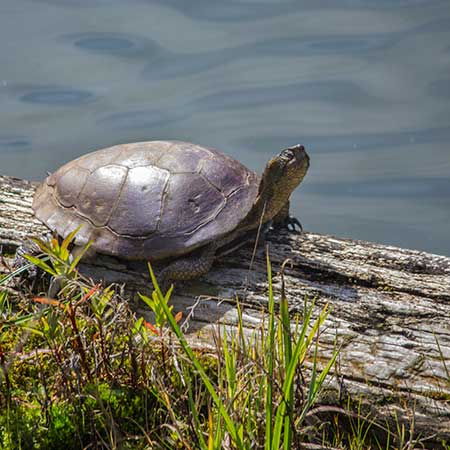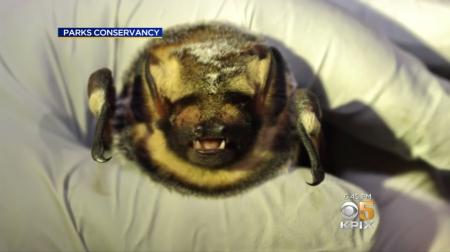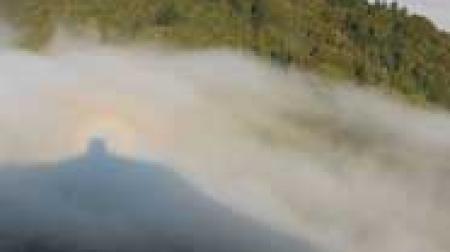Why Was This Indicator Chosen?
This state Species of Special Concern is a good indicator of freshwater aquatic conditions and, to some extent, grassland habitats as well. The small numbers of western pond turtles (Actinemys marmorata) seen at Muir Beach in the early 1990s are gone (PWA, 1994; Ely, 1993; Fong unpublished data, 2015), but years of monitoring on Marin Municipal Water District (MMWD) lands provides adequate data to understand how the remaining known populations of western pond turtles on Mt. Tam are faring.
What is Healthy?
The western pond turtle population in the One Tam area of focus should be stable or increasing, with an age distribution that indicates successful reproduction and juvenile survival.
What Are the Biggest Threats?
- Predators like non-native American bullfrogs (Lithobates catesbeianus) and bass (Micropterus spp.), as well as certain overly abundant native predators such as skunks (Spilogale spp.), raccoons (Procyon lotor), ravens (Corvus corax), and crows (Corvus brachyrhynchos)
- Competition or predation from red-eared sliders (Trachemys scripta elegans) and other non-native turtles that live in Mt. Tam’s ponds and reservoirs
- Car strikes as the turtles travel between aquatic habitats or when migrating to nesting sites
What is The Current Condition?
Even though the Redwood Creek population has disappeared, the overall current condition is Good, as numbers of western pond turtles in the Olema Valley pond and MMWD sites are unchanged. The age structure of the MMWD population also appears stable and indicates good levels of juvenile survival.
What is the Current Trend?
Volunteer and biologists’ observations between 2003 and 2016 have shown No Change in the trend for western pond turtles.
How Sure Are We?
Our confidence is High, as multiple data sources support habitat occupancy assessments, and ongoing monitoring has yielded consistent results regardless of the level of effort.
What is This Assessment Based On?
- MMWD monitoring since 2004
- National Park Service inventory data from the One Tam area of focus from 1996 (Fong, 2002) and 2014–2015
What Don’t We Know?
Key information gaps include:
- Population drivers such as egg and hatchling predation rates that affect abundance, survival, and recruitment; the cause of the decline and loss of western pond turtles from Muir Beach; and the influence of local coastal climatic conditions on breeding ecology
- Demographic data on age/size structure of sustainable western pond turtle populations in coastal California
- Surveys including presence/absence data for historic populations



